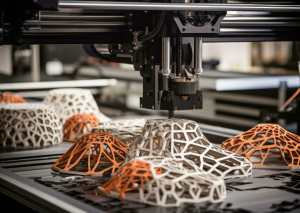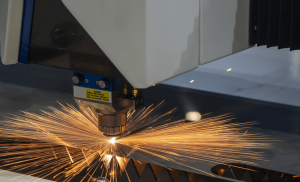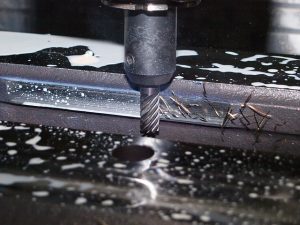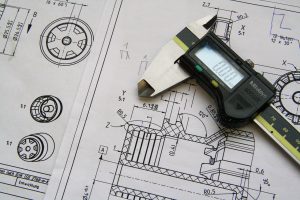Milling machines and lathes are essential tools in modern manufacturing, each with unique capabilities.
Milling machines use rotating cutting tools to remove material from a stationary workpiece, ideal for creating flat, complex surfaces and intricate designs. Lathes, on the other hand, rotate the workpiece against a stationary cutting tool, perfect for machining cylindrical parts with precision. While mills excel in versatility and handling complex shapes, lathes are superior for producing precise, symmetrical components. Choosing between the two depends on your specific machining needs, workpiece geometry, and production volume. Both machines benefit significantly from CNC technology, enhancing their precision and efficiency in various applications.
Understanding the differences between these two types of machines is vital for making informed decisions about their applications. This article will delve into the specifics of milling machines and lathes, comparing their functions, applications, and suitability for different tasks.
What is Milling Machine
Milling machines are versatile tools used in machining solid materials. They work by rotating a cutting tool that removes material from a workpiece. The workpiece is typically secured to a movable table, allowing for precise and varied shapes and cuts. Milling machines are essential for tasks that require precision and complex geometries, making them indispensable in many manufacturing processes.
Definition
A milling machine is a machine tool used to machine solid materials by removing material with a rotating cutter. This process allows for the creation of a variety of shapes and features on a workpiece.
Working Principle
The milling process involves the cutter rotating around the spindle axis, and the workpiece is fed against the cutting tool to remove material. This interaction between the cutting tool and the workpiece enables the creation of detailed and complex designs.
Types of Milling Machines
Milling machines come in several types, each suited for specific tasks and industries. Understanding these types helps in selecting the right machine for a given job. The variety of milling machines ensures that there is a suitable option for virtually any manufacturing need.
- Vertical Milling Machine:This type has a vertically oriented spindle and is commonly used for precise cuts. It is ideal for workpieces that require detailed vertical cuts.
- Horizontal Milling Machine:With a horizontally oriented spindle, this machine is suitable for heavier and deeper cuts. It excels in tasks that involve extensive material removal.
- Gantry Milling Machine:Known for its large size, this machine is used for large workpieces and heavy-duty tasks. It provides the stability and power needed for substantial projects.
- CNC Milling Machine:CNC (Computer Numerical Control) milling machines use computerized controls to perform precision milling operations. These machines offer unparalleled precision and repeatability, making them ideal for high-precision tasks.
Main Components of Milling Machines
Each milling machine consists of several key components, each playing a critical role in its operation and effectiveness. Understanding these components is essential for proper maintenance and efficient use of the machine.
- Spindle:The part of the machine that holds and rotates the cutting tool. The spindle’s speed and stability directly impact the precision and quality of the cuts.
- WorkTable:The surface on which the workpiece is secured and moved during milling. The table’s adjustability and stability are crucial for accurate machining.
- Cutting Tool:The tool that removes material from the workpiece. The type and sharpness of the cutting tool determine the quality and efficiency of the machining process.
Applications of Milling Machines
Milling machines are widely used in various industries for different applications, making them essential for modern manufacturing. Their versatility allows them to perform a wide range of tasks, from simple cuts to complex geometries.
Application in Mold Making:Milling machines are used to create precise molds for manufacturing processes. These molds are essential for producing consistent and high-quality products.
Application in Automotive Parts Production:These machines are essential for producing various automotive components. The precision and repeatability of milling machines ensure the high quality of critical parts.
Other Industrial Applications:Milling machines are used in aerospace, electronics, and other industries for precision machining. Their ability to handle complex shapes and detailed features makes them invaluable in many fields.
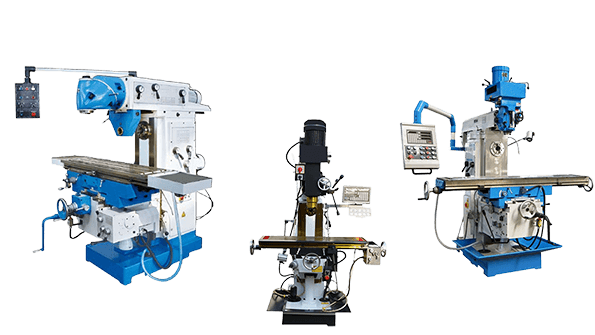
What is Lathe
Lathes are machine tools used to shape materials by rotating the workpiece against a cutting tool. They are commonly used for producing cylindrical parts. Lathes are essential for tasks that require symmetry and precision, such as creating shafts and threads.
Definition
A lathe is a machine tool that rotates a workpiece on its axis to perform various operations such as cutting, sanding, and drilling. This rotation allows for the creation of symmetrical shapes and features.
Working Principle
The lathe works by rotating the workpiece while a stationary cutting tool removes material from it. This process enables the creation of precise and uniform cylindrical shapes.
Types of Lathes
Lathes come in various types, each designed for specific tasks and materials. The different configurations of lathes allow for flexibility in handling a wide range of workpieces and operations.
- Horizontal Lathe:The most common type, used for general-purpose turning operations. It is versatile and can handle a variety of tasks.
- Vertical Lathe:Suitable for large, heavy workpieces that are difficult to mount on horizontal lathes. It provides stability and ease of use for substantial projects.
- CNC Lathe:Controlled by computers, CNC lathes offer high precision and repeatability. These machines are ideal for tasks that require consistent quality and detailed features.
- Lathe-Milling Combination Machines:These machines combine the functions of a lathe and a milling machine. They offer the flexibility to perform multiple operations on a single machine, saving time and space.
Main Components of Lathes
Lathes consist of several essential components, each contributing to their functionality and versatility. Understanding these components is crucial for effective use and maintenance of the machine.
- Chuck:The device that holds the workpiece in place. The chuck’s grip and alignment are vital for accurate machining.
- Tool Post:The part of the lathe where the cutting tool is mounted. The stability and adjustability of the tool post affect the precision of the cuts.
- Spindle:The rotating axis that drives the workpiece. The spindle’s speed and stability are critical for achieving high-quality results.
Applications of Lathes
Lathes are used in various industries for different applications, from manufacturing components to intricate designs. Their ability to produce precise and uniform shapes makes them essential for many tasks.
Application in Shaft Manufacturing: Lathes are used to produce precise and uniform shafts. These components are critical for many mechanical systems.
Application in Thread Cutting: They are essential for creating various types of threads on parts. The precision of lathes ensures the quality and compatibility of threaded components.
Other Industrial Applications: Lathes are used in jewelry making, woodworking, and more. Their versatility and precision make them suitable for a wide range of tasks.

Comparison of Milling Machines and Lathes
Working Principle Comparison
Milling and turning are fundamentally different processes, each suited to specific types of work. Understanding these differences is essential for choosing the right machine for a given task.
Differences Between Milling and Turning: Milling involves rotating a cutting tool against a stationary workpiece, while turning involves rotating the workpiece against a stationary cutting tool. This fundamental difference affects the types of shapes and features each process can produce.
Suitable Workpiece Types: Milling is ideal for flat or irregular surfaces, while turning is best for cylindrical or conical shapes. The choice between milling and turning depends on the geometry of the workpiece and the desired features.
Precision and Efficiency
Precision and efficiency are critical factors in choosing between milling machines and lathes. Each machine offers unique advantages depending on the requirements of the task.
Precision Comparison: Milling machines generally offer higher precision for complex shapes, while lathes are excellent for precise cylindrical parts. The choice between the two depends on the specific precision needs of the workpiece.
Speed Comparison: Lathes can be faster for producing cylindrical parts, while milling machines may take longer for detailed work. The efficiency of each machine depends on the complexity and requirements of the task.
Complexity of Operation and Technical Requirements
Different levels of skill and training are required to operate milling machines and lathes effectively. Understanding these requirements is essential for ensuring efficient and accurate operation.
Technical Requirements for Operators: Operating a milling machine often requires more complex setup and knowledge, while lathes may be simpler to learn but still require skilled operators. Proper training and experience are crucial for both types of machines.
CNC Technology Comparison: Both milling machines and lathes benefit from CNC technology, which enhances precision and efficiency but also requires advanced programming skills. The integration of CNC technology can significantly improve the capabilities and performance of both machines.
Maintenance and Upkeep
Proper maintenance is crucial for the longevity and performance of both milling machines and lathes. Regular upkeep ensures that the machines operate efficiently and produce high-quality results.
Maintenance Requirements for Milling Machines: Regular lubrication, tool changes, and calibration are essential. Keeping the machine in optimal condition helps maintain precision and efficiency.
Maintenance Requirements for Lathes: Frequent inspection of moving parts, lubrication, and tool sharpness are important for optimal performance. Regular maintenance helps prevent breakdowns and ensures consistent quality.
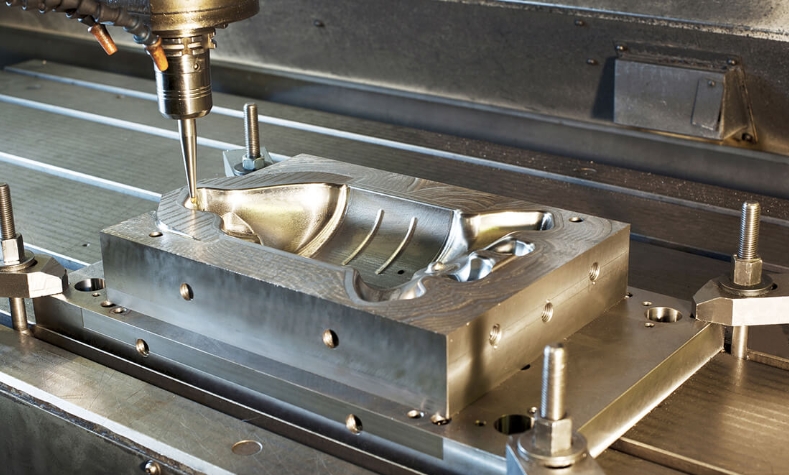
Choosing Between Milling Machine and Lathe
Choosing Based on Machining Needs
The choice between a milling machine and a lathe depends on the specific machining requirements. Understanding the needs of the task is essential for selecting the right machine.
Type and Size of Workpieces: Milling machines are better for large, flat, or irregular workpieces, while lathes are ideal for cylindrical parts. The geometry and size of the workpiece are critical factors in the decision-making process.
Complexity of Machining: Milling machines handle complex shapes better, while lathes excel in producing precise cylindrical shapes. The complexity of the task influences the choice of machine.
Cost Considerations
Both initial investment and ongoing costs must be considered when choosing between a milling machine and a lathe. Understanding the cost implications helps in making an informed decision.
Purchase Cost of Equipment: Milling machines tend to be more expensive due to their complexity. The initial investment is higher, but the versatility and capabilities of milling machines can justify the cost.
Operational and Maintenance Costs: Both types of machines require regular maintenance, but the costs may vary based on usage and complexity. Budgeting for ongoing costs is essential for long-term operation.
Production Volume and Efficiency Requirements
Production needs play a significant role in the decision-making process. The volume and efficiency requirements of the task influence the choice between milling machines and lathes.
Small Batch vs. Large Batch Production: Milling machines are more versatile for small batch and custom work, while lathes are efficient for large batch production. The production scale determines the suitability of each machine.
Customization Needs: Milling machines offer greater flexibility for custom shapes and designs. The ability to handle customized tasks makes milling machines ideal for specialized projects.
Operation and Technical Support
Ensuring proper operation and support is essential for maintaining productivity and quality. The availability of training and technical support influences the effectiveness of the machine.
Training for Operators: Both types of machines require skilled operators, with specific training needs for each. Providing adequate training ensures that operators can use the machines effectively and safely.
Technical Support and After-Sales Service: Reliable technical support and service are crucial for minimizing downtime and ensuring efficient operation. Access to support services helps address issues promptly and maintain productivity.
Future Trends
Development of CNC Technology
Advances in CNC technology continue to shape the future of milling machines and lathes. Keeping up with these developments is essential for staying competitive in the manufacturing industry.
- Smart Manufacturing and Automation: The integration of smart technology and automation is transforming the manufacturing landscape. These advancements enhance precision, efficiency, and flexibility.
- Emerging Innovations: Continuous innovation in CNC technology introduces new capabilities and improvements. Staying informed about these trends helps in adopting cutting-edge solutions.
New Material Processing Needs
Emerging materials require advanced machining capabilities. Understanding the processing needs of these materials is crucial for selecting the right equipment.
- Processing of Composite and High-Strength Alloys: New materials present unique challenges and opportunities for milling machines and lathes. The ability to handle these materials expands the range of applications for both types of machines.
- Adapting to Material Innovations: As new materials are developed, machining techniques must evolve. Adapting to these changes ensures continued relevance and competitiveness.
Environmental and Energy Considerations
Sustainability is becoming increasingly important in manufacturing. Implementing environmentally friendly practices is essential for long-term success.
- Application of Green Manufacturing Technologies: Companies are adopting green practices to reduce environmental impact and improve energy efficiency. These initiatives contribute to sustainability and cost savings.
- Energy-Efficient Solutions: Investing in energy-efficient equipment and processes reduces operational costs and supports environmental goals.
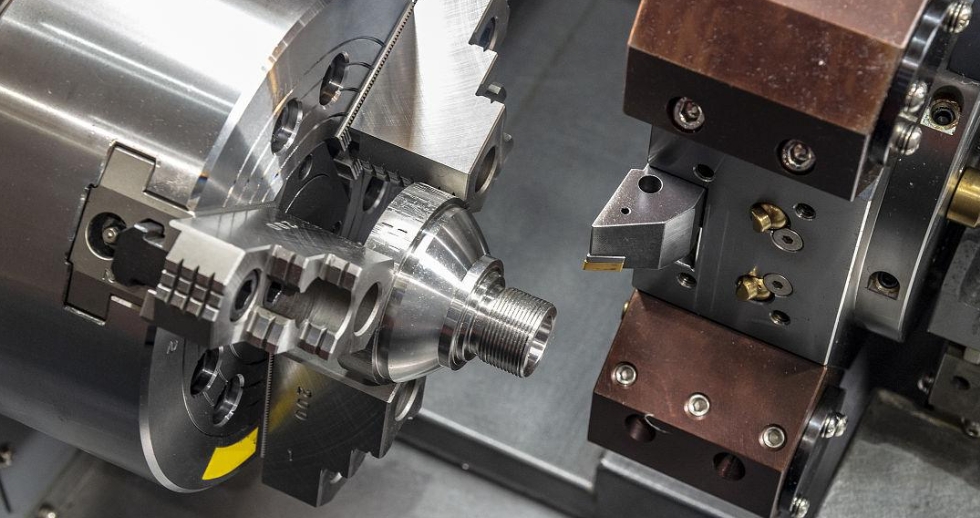
Conclusion
Looking ahead, advancements in technology and sustainability practices will continue to shape the future of these essential tools in the manufacturing industry. Embracing these trends and making informed equipment choices will enable manufacturers to remain competitive and achieve high-quality results. By leveraging the strengths of both milling machines and lathes, manufacturers can enhance their capabilities and meet the diverse demands of modern production.
Frequently Asked Questions Answered
Which is better, a lathe or a mill?
A mill is better suited for machined parts that are not entirely cylindrical, have flat, complex features, or have offset/angled holes. Mills can machine cylindrical features, but if the part is purely cylindrical, then a lathe is a better, more precise option .
Can a mill do everything a lathe can?
The lathe is for your cylindrical and symmetrical shapes, while the mill is for non-cylindrical workpieces. They work together to create complex shapes and can both be used on wood, metal, plastic, or a variety of other materials. However, due to space and budget constraints, you might need to choose one based on your specific needs .







